

































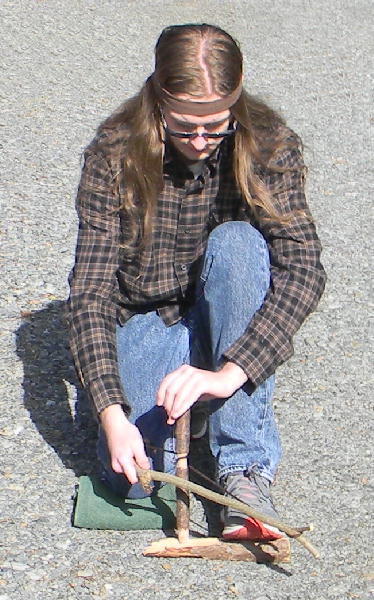 Hand Spinning Method:
Hand Spinning Method: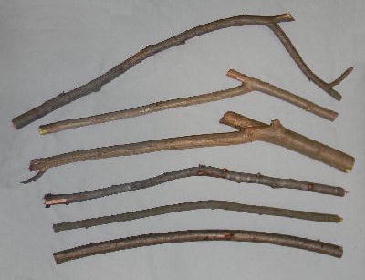 |
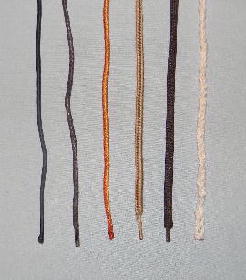 |
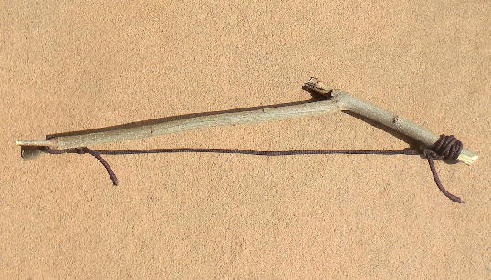 |
| Potential Bow Sticks | Potential Bowstrings | Bow With String Attached |
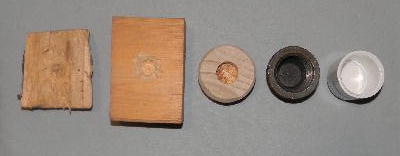
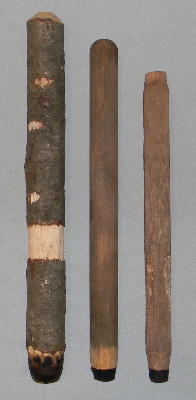 The drill stick should be a dry straight stick between 8 to 11 inches long (20 to 28 cm) with a diameter between 0.75 to 1.25 inches (1.9 to 3.2 cm).
The drill stick should be a dry straight stick between 8 to 11 inches long (20 to 28 cm) with a diameter between 0.75 to 1.25 inches (1.9 to 3.2 cm).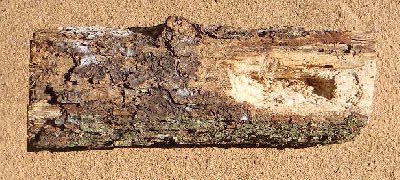 The foot piece in the picture on the right is a 9 inch long (23 cm) piece of firewood that was split in half using a hatchet. The split flat side of the foot piece should be placed facing the ground for stability. Only a very small portion on the top right side of the foot piece was whittled with a knife in order to carve a pivot hole and an air groove (explained below). However, this foot piece clearly illustrates that you do not need to invest a lot of time and effort in creating a foot piece that looks really nice.
The foot piece in the picture on the right is a 9 inch long (23 cm) piece of firewood that was split in half using a hatchet. The split flat side of the foot piece should be placed facing the ground for stability. Only a very small portion on the top right side of the foot piece was whittled with a knife in order to carve a pivot hole and an air groove (explained below). However, this foot piece clearly illustrates that you do not need to invest a lot of time and effort in creating a foot piece that looks really nice.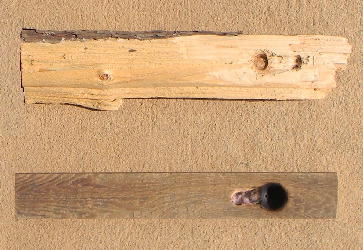 Foot Piece Pivot Hole:
Foot Piece Pivot Hole: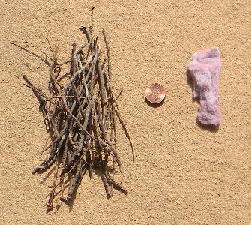 Tinder is extremely important when starting a fire. Tinder is any material that will burst into flames without having to be exposed to a flame. The most important property of the tinder material is the minimum temperature at which it will ignite and catch on fire. A tinder's minimum combustion temperature is a function of its density, its surface area, and how well the material resists the absorption of humidity from the surrounding air.
Tinder is extremely important when starting a fire. Tinder is any material that will burst into flames without having to be exposed to a flame. The most important property of the tinder material is the minimum temperature at which it will ignite and catch on fire. A tinder's minimum combustion temperature is a function of its density, its surface area, and how well the material resists the absorption of humidity from the surrounding air.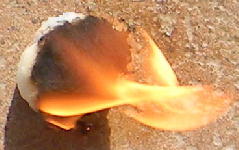
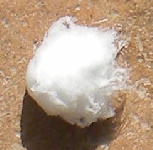
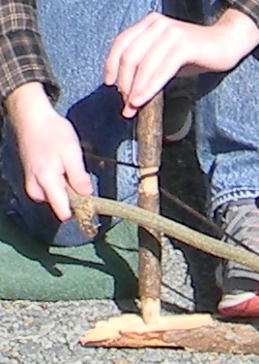
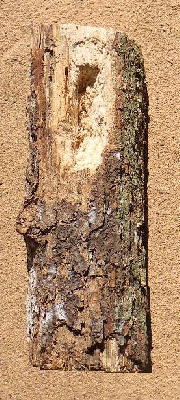 |
 |
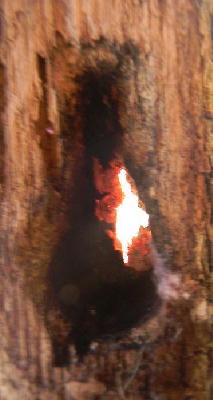 |
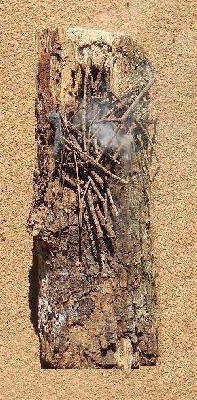 |
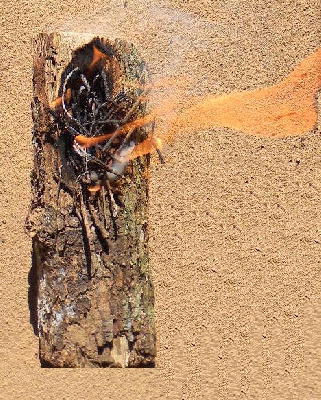 |
| Foot Piece | Drill Stick | Red Hot Coal in Pivot Hole | Smoking, Tinder, Kindling | Fire Burning Extremely Well |
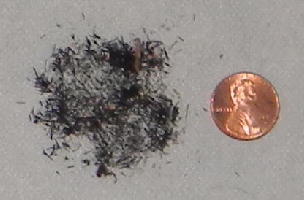
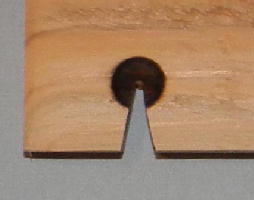 On March 1, 2017 all the bow drill instructions on the internet, and all the companies that sell bow drill kits on Amazon, and all the survival manuals I currently own, all recommend starting a friction fire with a bow drill using a foot piece that is designed as follows:
On March 1, 2017 all the bow drill instructions on the internet, and all the companies that sell bow drill kits on Amazon, and all the survival manuals I currently own, all recommend starting a friction fire with a bow drill using a foot piece that is designed as follows:
